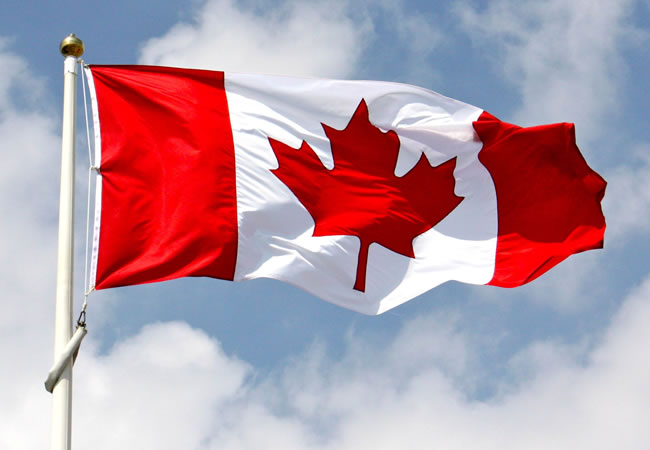A growing trend of international students using study permits to enter Canada and subsequently apply for refugee status has prompted government action, according to a report by Global News.
Data from Immigration, Refugees and Citizenship Canada (IRCC) revealed that 12,915 individuals who filed for refugee status in Canada during the first eight months of this year already held study permits or extensions. This represents a staggering 752% increase compared to the 1,515 individuals with such permits who sought refugee status throughout 2018.
Immigration Minister Marc Miller has expressed concern that many foreign nationals are exploiting the international student program as a “backdoor entry” into Canada. In an interview on Global News’ The West Block, he indicated plans to explore reforms to the international student program to address this issue.
Canada is known for its commitment to welcoming refugees, and Prime Minister Justin Trudeau affirmed that while the country will continue to do so, it must also safeguard against misuse of its immigration programs. “We must ensure that our ability to assist those in genuine need is not compromised by individuals using the asylum path as a shortcut to gain Canadian permanent residency or citizenship,” he said.
Reduction in International Student Program Numbers
In response to these concerns, Canada plans to cut the number of study permits it approves for international students next year by 48,000, reducing the total to 437,000 from the previous 485,000. This change represents a 10% decrease in study permit approvals for the upcoming year.
“The reality is that not everyone who wants to come to Canada will be able to — just as not everyone who wants to stay will have that opportunity,” Miller stated earlier this month. He emphasized the need to strengthen temporary residence programs and develop a more comprehensive immigration strategy to adapt to today’s evolving landscape, ensuring the integrity and sustainability of Canada’s immigration system.
The IRCC is also set to update the Post-Graduation Work Permit (PGWP) program this autumn to better align with labor market demands. Changes to work permit eligibility will limit it to spouses of foreign workers in management or professional roles or those in sectors facing labor shortages, including the Temporary Foreign Worker Program (TFWP) and the International Mobility Program (IMP). Additionally, eligibility for work permits will be restricted to spouses of master’s degree students whose programs last at least 16 months.
“The TFWP was established to address labor shortages when qualified Canadians were unavailable,” said Randy Boissonnault, Minister of Employment, Workforce Development, and Official Languages. “Currently, we have more Canadians qualified to fill these positions. The changes we are implementing will prioritize Canadian workers and ensure that our programs meet the needs of our economy.”
As part of the 2025–2027 Immigration Levels Plan, Ottawa aims to reduce the number of temporary residents from 6.5% to 5% of Canada’s total population, with the plan expected to be released by the end of the month. Starting November 1, all PGWP applicants will be required to demonstrate minimum language proficiency in French or English, with a Canadian Language Benchmark (CLB) level of 7 for university graduates and CLB 5 for college graduates.
Impact of Housing Crisis on Temporary Resident Policies
The tightening of temporary immigration rules follows increasing concerns about housing affordability and shifting public opinion. A Leger poll conducted in July found that 60% of respondents believe there are too many immigrants coming to Canada. Earlier this year, Miller capped study permit applications at 606,250, aiming to reduce the number of new permits issued by 40%.
“The goal of these instructions is to ensure that the number of study permit applications processed by the Department of Citizenship and Immigration does not exceed 606,250 in one year, starting from the date of signature,” stated the Canada Gazette on February 3.
The government has implemented various measures to better manage the influx of international students, including:
Introducing a letter of acceptance verification system to combat fraud
Increasing the financial requirements for study permit applicants
Limiting open work permit eligibility for spouses of students to specific degree programs
Reforming the PGWP to exclude graduates of certain college programs
Proposing new regulations for international students changing schools
Additionally, temporary foreign workers have experienced changes, such as enhanced protections through amendments to the Immigration and Refugee Protection Regulations and the launch of the Migrant Worker Support Program to inform workers of their rights.
Following a sharp rise in asylum claims from Mexican citizens, Ottawa recently reinstated partial visa requirements for them, which had accounted for about 17% of all asylum claims in 2023. This action, taken after an increase in claims—most of which were refused, withdrawn, or abandoned—has seen Mexican asylum claims drop by nearly 80% from 1,997 in February to 434 in June 2024.
As part of an agreement between Canada and the United States to extend the Safe Third Country Agreement to the entire land border, irregular crossings have significantly declined, with the average number of irregular asylum claims falling from 165 per day in March 2023 to just 13 per day since then.



